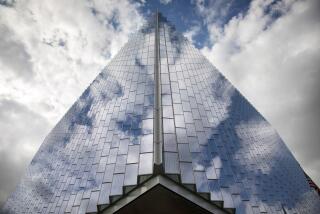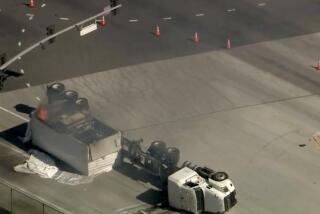Eureka! We Have Paved It
There isn’t much city to Highway City, at least not yet. Its side streets remain a mishmash of tumbledown houses, frontyard trailers, lean-tos and sagging, chicken-wire stables. The bones of the old Highway City Garage and neighboring Coyote Club suggest a livelier time, but today the squat, bleached-out buildings are shuttered, their signage faded. Across one wall a tagger has misspelled a prophecy: “BULLDOZOR.”
California 99 slices north-south through Highway City. The 1980 census found 1,455 people living in this crossroads town. Ten years later, the population was put at 1,498, hardly a definition of boom times. A road sign once marked the entrance to the unincorporated community. It came down in the 1980s as Fresno stretched west across the San Joaquin Valley floor and annexed the neighborhood.
Highway City does boast one of California’s wackier tourist attractions: a labyrinth of caves and passageways burrowed deep beneath the hardpan soil decades ago by an obsessive Italian immigrant named Baldasare Forestiere. Beyond the Forestiere Underground Gardens, however, the community’s claims on greatness are few. Asked to identify the biggest thing that ever happened here, 84-year-old Robert Akins squinted hard for a moment as he silently surveyed a half-century in Highway City.
“Probably,” the old man in Dickey overalls said at last, “that would have been when the auto shop burned down.”
*
And so the picture is set of a weedy pocket of poverty, a blur of blight that barely registers among Fresnans as they rush out West Shaw Avenue to catch the freeway. It would be difficult to imagine Highway City ever being much more than it is today. It also, most likely, would be a deception--for Highway City stands at the center of what many experts in urban growth see as the next California megalopolis.
Call it Greater Highway City.
The strip of Central Valley in question runs more than 250 miles from Bakersfield to Sacramento. California 99 is the spine of this land, which over the last century has evolved, famously, into the world’s most prolific agricultural hothouse. Nearly 100 communities exist within the corridor, most of them expanding at more high-powered rates than that of Highway City. Before too long, it is feared (or anticipated, depending on one’s perspective and real estate portfolio), these distinct farm towns and middling cities will meld into a vast “linear city” of 8 million residents--with all the familiar accouterments and sideshows.
“Already nearly 75% of this emerging linear city is in urban development or is anticipated to be urbanized within the next 20 years,” a University of California professor warned a valley symposium almost a decade ago. “The Central Valley could be the world’s longest single urban system early in the 21st century.”
Such clarion calls are now commonplace. Agricultural preservationists have identified the California 99 corridor as the nation’s foremost battleground in the struggle to cheat the subdividers. Environmentalists worry about the toll on air quality and water systems. Valley people, meanwhile, fret openly about becoming “another L.A.” Drawing attention to this train wreck in the making, it would seem, is not the problem.
*
The dilemma is how to keep the wreck from happening. Saving farmland for farmers is a fine concept, flawed only by the reluctance of farmers to be saved. Agricultural preservation might be a laudable concept, but too many farmers will say privately that they prefer to keep their options open. Selling to developers is regarded as a financial parachute, a way to forestall bankruptcy or gild the retirement package.
Politicians--and their house buying constituents--also tend to drift toward indifference or outright denial. With an exuberance peculiar to California, the concept of disposable neighborhoods, and even cities, has become codified: We’ll live here until it gets too crowded, too much the next L.A., and then cash out and move on to the next new shiny tract on the far suburban edge. Once the Central Valley is paved over, well, there’s always Modoc County, or Idaho.
Akins shares in the fatalism that clouds the growth debate. He came to California to pick cotton in 1940 and settled in Highway City. “I’ve been here 50 years,” he said, pointing to his tiny house, its roof partially covered with tin, “and I finally got this place the way I like it.” He realizes growth cannot be resisted forever. Already the framework of a new motel looms over his backyard. He understands the process of progress that, inevitably it seems, one day will make the Central Valley one big Highway City.
“I just hope,” he said with a little grin, “that I’ll be dead by then.”
Strange how often one hears that refrain voiced in this valley, across this state.
More to Read
Sign up for Essential California
The most important California stories and recommendations in your inbox every morning.
You may occasionally receive promotional content from the Los Angeles Times.











